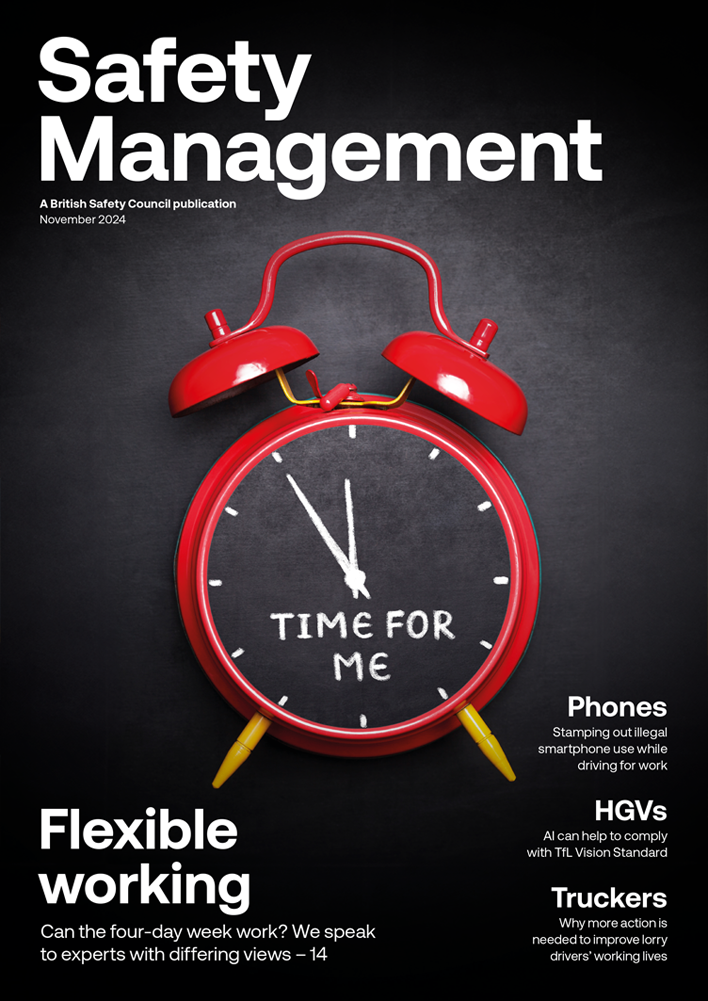A significant percentage of employees feel that their employer’s efforts to support their wellbeing are either misdirected or little more than a ‘tick-box’ exercise, so it’s vital to take a strategic approach to worker wellbeing, starting with asking staff exactly why, where and how they need support.
Features
Are you walking the talk with worker wellbeing?
In preparation for World Mental Health Day on 10 October many organisations and businesses will begin to send out their awareness communications and social media hashtags such as #itsoknottobeok, and perhaps will organise a cuppa and a chat event demonstrating that they are a caring place to work and proudly proclaiming their commitment to creating a healthy work environment.
However, the shared perceptions of their employees are that these declarations are superficial, tick-box, and resemble a relatively new phenomenon known as ‘wellbeing washing’.
 There is a disconnect between the external depictions of support for employee wellbeing and the actual experiences of employees. Photograph: iStock
There is a disconnect between the external depictions of support for employee wellbeing and the actual experiences of employees. Photograph: iStock
What is wellbeing washing?
Wellbeing washing occurs when organisations present public displays of prioritising employee wellbeing, often through PR campaigns, mission statements or corporate social responsibility initiatives, while the reality within the business tells a different story. Fundamentally, there is a disconnect between the external depictions of support for employee wellbeing and the actual experiences of employees.
Recent research has reinforced this disconnect between employers and employees. A survey of 1,000 people in the UK found that one in three (38 per cent) employees considered their employer guilty of wellbeing washing, seven in ten (71 per cent) acknowledged that their workplace promoted recognised mental health awareness days/weeks; however, only just over one-third (36 per cent) of organisations were considered to have ‘good’ or ‘outstanding’ mental health support.
Earlier this year, IOSH ran a snap online poll with 400 responses from nearly 60 countries, where just over half (51 per cent) of respondents accused their employers of wellbeing washing and providing benefits and services that they didn’t want or need, such as online wellbeing services, wellbeing walks/breaks (no time to take them), fruit and discounts on holidays/shopping.
The IOSH poll also indicated that employees didn’t want Employment Assistance Programmes (EAPs) that focus on out-of-hours (i.e. non-work) issues but support to deal with work-related matters. McKinsey & Company (2021) reported that one of the main reasons that 10–16 per cent of employers were reducing or stopping their EAP support was due to the low number of employees using the services, while Deloitte discovered that C-suite executives overestimate how well employees are and underestimate how unsupported they feel. Disconnected indeed!
 Audrey Fleming: "Organisations that have a strategic approach to employee wellbeing report higher numbers of positive achievements at both individual and organisational levels."
Audrey Fleming: "Organisations that have a strategic approach to employee wellbeing report higher numbers of positive achievements at both individual and organisational levels."
Nonetheless, these findings also demonstrate that in many cases wellbeing washing isn’t the intention of the employer and they often perceive they are doing the right things.
So, what can be done to turn things around.
First, recognise the signs and consequences of wellbeing washing
- Misaligned policies: One of the key signs is a disconnect between the organisation’s stated policies and the daily experiences of employees. For instance, if a company promotes work–life balance but consistently expects long hours with no flexibility, this misalignment is indicative of wellbeing washing.
- Lack of resources: Organisations claiming to prioritise employee wellbeing should provide the necessary resources and support. If these resources are lacking or difficult to access, it’s another red flag.
- Token efforts: Superficial gestures, such as occasional wellbeing workshops or events, without substantial ongoing support, may imply that the organisation is more interested in appearing supportive than genuinely investing in employee wellbeing; box ticked.
If not addressed, wellbeing washing can have several negative consequences:
- Distrust and disengagement: Employees may become disillusioned and disengaged when they perceive that the organisation’s declarations are insincere. Trust comes on foot and leaves on horseback!
- Reduced productivity: A lack of genuine support for wellbeing can lead to increased stress and decreased productivity among employees.
- Talent attrition and increased turnover: High-performing employees seeking a truly supportive work environment may choose to leave the organisation.
Think of the ‘Great Resignation’, ‘quiet quitting’, current shortages in the global labour market and the pandemic of discontented labour strikes across many sectors and industries. Perceived lack of purpose and value in the workplace are often cited reasons for these current trends.
Start creating an authentic culture of wellbeing
Organisations that have a strategic approach to employee wellbeing report higher numbers of positive achievements at both individual and organisational levels. Focusing on reducing psychosocial hazards and improving physical health leads to increased resilience, better employee engagement, reduced sickness absence, and higher performance and productivity (CIPD, 2022).
There is no one size fits all and a holistic approach should be adopted utilising these steps and frameworks:
- Ask for employee feedback: Stop guessing and begin getting feedback from employees through surveys, focus groups or regular meetings to gauge their wellbeing needs and concerns; and ensure to respond to this feedback. This approach will also save wasting time and money on support and resources that have no significant impact long term.
- Align actions with words: Have a strategy and ensure that policies and practices align with the organisation’s stated objectives and commitment to employee wellbeing.
- Tie golden threads: Rather than siloed HR, health and safety, occupational health and other significant stakeholders, bring together their diversity and expertise and collaboration into employee wellbeing.
- Reduce the stressors: Stop the ‘band-aid’ approach of focusing on treating stress symptoms and instead work to reduce the stressors. Examples such as implementing workplace stress risk assessments, flexible working and family-friendly benefits will all help to promote and support a quality work–life balance.
- Invest in resources: Allocate resources and budget to support wellbeing initiatives, such as mental health programmes, flexible work arrangements and professional development opportunities.
- Lead by example: ‘Walk the talk’ through role modelling practices (for example, don’t send emails out after hours) and reinforce an organisational culture that prioritises wellbeing.
- Measure and monitor: Consider workplace wellbeing as a journey not a tick-box destination. Reviewing progress is vital to determining what is working, not working and why. Assess participation and engagement, employee feedback, costs and savings.
- Transparency: Be transparent about the organisation’s intentions and progress in promoting wellbeing.
 Stop the ‘band-aid’ approach of focusing on treating stress symptoms and instead work to reduce the stressors. Photograph: iStock
Stop the ‘band-aid’ approach of focusing on treating stress symptoms and instead work to reduce the stressors. Photograph: iStock
Shared responsibility required
Improving workplace wellbeing is a shared responsibility between employers and employees. While organisations create a supportive environment, employees can take proactive steps to enhance their own wellbeing. Here are some actions employees can take:
Prioritise self-care:
- Set boundaries: Establish clear boundaries between work and personal life to prevent burnout. Avoid checking work emails or taking calls during off-hours.
Take breaks: Regularly step away from your desk or workspace to stretch, breathe or simply relax for a few minutes. - Manage stress: Practise stress management techniques: Learn and use stress reduction techniques such as deep breathing, mindfulness or meditation.
Time management: Organise tasks, prioritise them and break them into manageable chunks to reduce stress related to deadlines.
Physical health:
- Stay active: Incorporate physical activity into your daily routine, even if it’s just a short walk during lunch breaks.
- Healthy eating: Choose nutritious foods and stay hydrated to maintain your energy levels.
Mental health:
- Seek support: If you’re experiencing stress, anxiety or depression, don’t hesitate to reach out to mental health professionals or EAP services provided by your organisation.
- Practise self-compassion: Be kind to yourself, and don’t be too hard on yourself when things don’t go as planned.
Social connections:
- Build positive relationships: Foster friendships at work, as well as maintaining a strong support network outside of work.
- Communicate: If you’re facing challenges, talk to your supervisor or HR department to find solutions or accommodations.
Professional development:
- Set goals: Continuously set and work towards professional goals to stay motivated and engaged in your work.
- Lifelong learning: Invest in developing new skills and acquiring knowledge to enhance your job satisfaction.
Time management:
- Prioritise tasks: Focus on high-impact tasks that contribute to your job satisfaction and the organisation’s goals.
- Avoid overcommitting: Learn to say no when your plate is full to prevent overwhelming yourself.
Work–life balance:
- Plan holidays: take your annual leave to recharge and spend quality time with family and friends.
- Flexible arrangements: Explore flexible work options if your organisation offers them to better balance work and personal life.
Feedback and communication:
- Provide feedback: If you have suggestions for improving workplace wellbeing, share them constructively with your employer or HR department.
- Advocate for change: Join or support employee resource groups or committees focused on wellbeing initiatives.
Learning to disconnect:
- After work hours: Avoid checking work-related emails or messages during your free time unless it’s necessary.
- Unplug: Give yourself digital detox breaks by staying away from screens
and social media.
Remember it’s a wellbeing journey travelled together
Wellbeing washing in the workplace can damage an organisation’s reputation and harm employee morale. To truly prioritise employee wellbeing, organisations must move beyond superficial gestures and align their actions with their words.
When employees genuinely experience the benefits of a supportive workplace, both the organisation and its employees stand to gain in terms of productivity, engagement and overall satisfaction. Improving workplace wellbeing is an ongoing and proactive process.
For more information see:
beingwelltogether.org
Dr Audrey Fleming is wellbeing health & safety auditor and consultant at the British Safety Council
FEATURES

Winter pressures mean good mental health support is crucial
By Kevin Bampton, British Occupational Hygiene Society on 01 December 2021
I will tell anyone who cares to listen that winter 2020/2021 was a historic moment in British social and economic history. British business became, for the first time ever, my public health hero.

The big sleep
By Marcus Herbert, British Safety Council on 01 December 2021
Poor quality sleep can affect both our physical and psychological wellbeing, but simple lifestyle changes can make a big difference.

Why changes to recycling legislation in England are an opportunity, not a burden
By Adriana Olaya Rodriguez, Newell Brands on 12 November 2024
From March 2025, many businesses in England will have to begin separating their recyclable and food waste from general waste prior to collection, but the changes will bring wider business benefits, such as reduced waste disposal costs and improved sustainability credentials.



